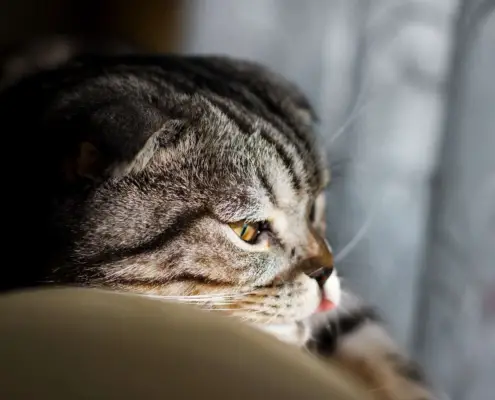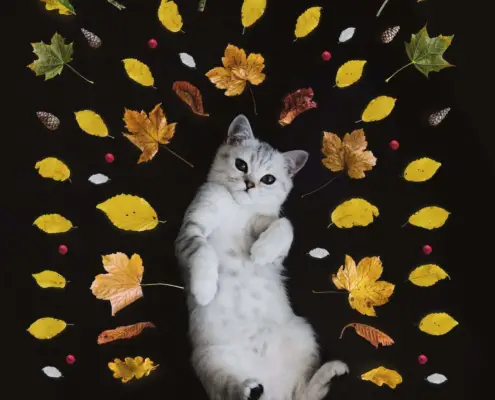Turkish Vankedisi cats are a truly unique breed, known for their stunning beauty and captivating personality. Originating from Turkey, these cats have a long and fascinating history. In this article, we will delve into the origins of the Turkish Vankedisi cat breed, explore their physical characteristics, discuss their charming personality traits, provide tips on caring for these cats, and highlight the importance of finding a reputable breeder or rescue organization. By the end, you’ll understand why Turkish Vankedisi cats make exceptional pets.
History and Origins of the Turkish Vankedisi Cat Breed
The Turkish Vankedisi cat breed has a rich and ancient history that dates back centuries. These cats are believed to have originated in the Lake Van region of Turkey, where they were highly revered by the locals. Legend has it that the Turkish Vankedisi cats were the favored pets of the royalty and were even considered sacred.
These cats have a distinct appearance, with their pure white coat and strikingly beautiful eyes. The Turkish Vankedisi cats were treasured for their ability to bring good fortune and protect against evil spirits. They were often gifted to esteemed guests and were even used as diplomatic presents between nations.
Physical Characteristics of Turkish Vankedisi Cats
Turkish Vankedisi cats are known for their elegant and graceful appearance. They have a medium-sized body with a strong and muscular build. Their most distinctive feature is their stunning white coat, which is silky, soft, and lustrous. Unlike many other cat breeds, the Turkish Vankedisi cats do not have any markings or patterns on their coat.
Another remarkable feature of these cats is their eye color. Most Turkish Vankedisi cats have captivating eyes that come in shades of amber or blue. Their eyes are expressive and often reflect their curious and intelligent nature.
Personality Traits of Turkish Vankedisi Cats
Turkish Vankedisi cats have a delightful and loving personality that makes them wonderful companions. They are known for their affectionate nature and enjoy being close to their human family members. These cats are highly sociable and thrive on human interaction. They are often described as being friendly, gentle, and outgoing.
One notable trait of Turkish Vankedisi cats is their intelligence. They are quick learners and enjoy engaging in interactive play. These cats are curious by nature and love exploring their surroundings. They are known to be excellent problem solvers and can be taught various tricks and commands.
Caring for Turkish Vankedisi Cats
To ensure the health and well-being of your Turkish Vankedisi cat, it’s important to provide them with proper care and attention. Here are some essential tips for caring for these beautiful felines.
Feeding and Nutrition for Turkish Vankedisi Cats
A balanced and nutritious diet is crucial for the overall health of your Turkish Vankedisi cat. It is recommended to feed them high-quality cat food that is specifically formulated for their needs. Consult with your veterinarian to determine the appropriate portion sizes and feeding schedule for your cat.
It’s important to provide fresh water at all times and ensure that the food and water bowls are clean. Avoid feeding your Turkish Vankedisi cat human food, as it may contain ingredients that are harmful to their health.
Exercise and Playtime for Turkish Vankedisi Cats
Turkish Vankedisi cats are active and energetic, and they require regular exercise to keep them physically and mentally stimulated. Provide them with plenty of toys that encourage interactive play. Engage in play sessions with your cat, using toys that allow them to chase, pounce, and climb.
Consider setting up a cat tree or scratching post in your home to provide your Turkish Vankedisi cat with an outlet for their natural instinct to climb and scratch. Regular exercise and playtime will help prevent boredom and keep your cat happy and healthy.
Common Health Issues and Veterinary Care for Turkish Vankedisi Cats
While Turkish Vankedisi cats are generally healthy and robust, it’s important to be aware of potential health issues that may affect them. Regular veterinary check-ups are essential to monitor their overall health and detect any potential problems early.
Some common health issues that Turkish Vankedisi cats may be prone to include dental problems, such as gum disease and tooth decay. Regular dental care, including brushing their teeth and providing dental treats, can help maintain their oral health.
Additionally, Turkish Vankedisi cats may be susceptible to certain genetic conditions, such as hypertrophic cardiomyopathy (HCM). It’s important to discuss these potential health concerns with your veterinarian and follow their recommendations for preventive care.
Finding a Turkish Vankedisi Cat Breeder or Rescue Organization
If you’re interested in welcoming a Turkish Vankedisi cat into your home, it’s crucial to find a reputable breeder or rescue organization. Take the time to research and visit different breeders to ensure they adhere to ethical breeding practices.
Rescue organizations can also be a great option if you’re looking to adopt a Turkish Vankedisi cat. These organizations provide a loving and safe environment for cats in need of a forever home. By adopting from a rescue organization, you’re giving a second chance to a cat in need.
Why Turkish Vankedisi Cats Make Great Pets
Turkish Vankedisi cats are truly remarkable creatures, combining beauty, intelligence, and a loving personality. Their rich history and unique physical characteristics make them stand out among other cat breeds. With proper care, these cats can bring immense joy and companionship to your life.
If you’re considering adding a Turkish Vankedisi cat to your family, remember to provide them with a loving and stimulating environment. Their affectionate nature and playful personality will undoubtedly make them a cherished member of your household. Whether you choose to adopt or purchase from a reputable breeder, the love and happiness a Turkish Vankedisi cat brings into your life will be immeasurable.
If you enjoyed my article, I would appreciate you sharing it with your network.

Sima Ndlebe
Sima writes for CatBuzz. He is interested in Cats, Health and Fitness, and Entrepreneurship.
Published: 10 October 2023



